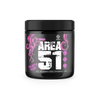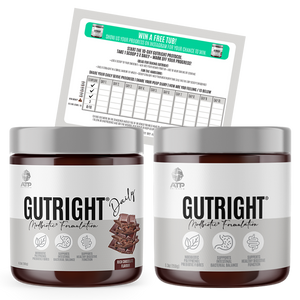'Stress Bod' Identified – Do you have one?

Stress Bod – we all feel it, some more than others, and for different reasons. We know by this point in time, the literature covers off how we should be stressing less, etc. But what if we have signs of prolonged stress, to the point we may no longer feel stressed, just look like it instead? We present the ‘stress bod’.
Stress Bod - What is the definition of ‘Stress’?
Stress is anything communicated by the body that may take us further away from balance baseline or homeostasis. We have signaling of stress coming in, inflammation, someone slamming on the breaks, your brother scaring you by jumping out from behind the couch, colds and flu’s, bills, relationships, and unwanted phone calls. We are far from the stressors our ancestors would have once described as ‘stressful’ but we respond similarly nonetheless.
When we are signaled to respond to stress, it occurs in three different areas of the brain:
1. Voluntary Nervous system – communicates signaling to our muscles to respond to sensory input coming in that we need to react quickly to. Seeing a snake or a shark is usually a pretty good example if you want to get out of there pretty quickly.
2. Autonomic Nervous system – This system consists of both the sympathetic and parasympathetic components of the body. Rest and digest and fight and flight for better insight. In response to stress you have the main action being controlled by your sympathetic/fight or flight, relaxes the arteries to the muscles so that more blood flow can come through while reducing the volume of blood in other areas like the stomach, kidneys, skin, etc. Adrenaline is released into the bloodstream, increasing total arousal and response time to enable us to flee and handle the situation at hand.
3. Neuroendocrine System – This is the system that regulates internal processes of the body as a whole, but in response to stress prioritizes the Hypothalamic Pituitary Adrenal Axis or HPA axis which you will have likely come across a few times in our content. When this is prioritized as a survival response to stress, another axis’ downregulate, like that of our reproductive/gonadal axis and our thyroid axis which slows digestion as a result[1].
This is processed as perceived by threat signaling through first phase – physical instantaneous action via sympathetic drivers. The Sympathetic Adrenomedullary system (SAM) – provides rapid first phase physical response. Then secondary – which is the HPA – more hormonal, adrenaline, and returning the body back to a state of homeostasis as fast as possible post threat.
What happens when we get the first signal?
- The signal comes in – threat, pain, and inflammation, etc. either internal or external, processed by the brain stem, spinal cord, and medullary systems[2].
- Hypothalamus interprets the signal and activates the sympathetic nervous system to respond via autonomic nerves to adrenal glands.
- From the adrenal glands, we get instant secretion of adrenaline – heightening functionary mechanisms and response times. All of this happens usually before the visual threat has finished processing the surroundings.
- Adrenaline then signals for the instant release of glucose into the bloodstream to fuel quick response of fight and flight.
- After the initial adrenaline response, you get to phase two response which is where the brain gets a flow in of stress signaling. If something is continued to be perceived as stress after the initial response, it releases cortisol from the adrenal glands until the perceived threat is over.
- The parasympathetic nervous system then kicks in to return to the calm, rest, and digest state.
Getting stuck in the Cortisol Loop
There is a lot of talk getting around about inhibiting and blocking cortisol – you absolutely don’t want to be limiting your body’s ability to adequately respond to stress. Cortisol keeps us alive, like a bodyguard getting you out of a stressful area before someone lands the punch. You need your innate stress response.
However, modern stress still gets responded to with the second phase stress response with the secretion of cortisol trickling through and rarely coming back down enough to rest and digest. The outcome of this is seen in how cortisol works to preserve us:
- Heightened anxious states[3].
- Poor memory recall but an increase of quick response memories around fear states[3].
- Chronic stress affects the immune system[4].
- Blood pressure increased heart rate at rest, and increase blood lipid status[5].
These are some of the internal insights look like, but what does it look like from the outside?
The ‘Stress Bod’ what chronic stress looks like from the outside.
Chronic stress has been linked with a higher tendency to present an increase in central adiposity or visceral fat accumulation. Chronic exposure to higher levels of cortisol in the body from everyday stress triggers, low-grade inflammation, allergies, and or injury can lead to an identifiable stress body shape[6]:
- Stubborn abdominal fat via accumulation of fat cell/visceral fat around organs.
- Fatigued and tired but wired – poor sleep-wake cycle.
- Sugary and salty food cravings.
- Waking with pain.
- Poor healing of wounds.
- Thinning papery skin.
- Bloating and poor digestion.
- Low libido and or erectile dysfunction.
- Higher states of anxiousness and or depression.
- Irregular ovulation or issues around.
What can you do if you feel like these are you?
Check-in with your health care professional for any underlying issues surrounding stress signalings like allergens, intolerances, injury, or low-grade inflammation.
If all clear, work on where you can implement some time to unwind, remove avoidable stressors, pay attention to your breathing patterns, and your moments where you feel tense. Drop your shoulders from your ears, lower the tongue from the roof of your mouth, and breathe with rhythm instead of a gasp every once in a while. Make better food choices if required and aim to get your body moving each day, through exercise, yoga, Pilates, or something that puts your body through a good range of motion to allow the tense contractive structure to be released.
References
- Archer, Edward & Wyk, Johannes & Wolfaardt, Gideon. (2017). Review: Pharmaceutical and personal care products (PPCPs) as endocrine-disrupting contaminants (EDCs) in South African surface waters. Water SA. 43. 10.4314/wsa.v43i4.16.
- https://www.health.harvard.edu/staying-healthy/understanding-the-stress-response
- Memory formation under stress: quantity and quality.Schwabe L, Wolf OT, Oitzl MS Neurosci Biobehav Rev. 2010 Mar; 34(4):584-91
- Effects of stress on the immune system. Khansari DN, Murgo AJ, Faith REImmunol Today. 1990 May; 11(5):170-5.
- Autonomic dysregulation in panic disorder and in post-traumatic stress disorder: application of power spectrum analysis of heart rate variability at rest and in response to recollection of trauma or panic attacks. Cohen H, Benjamin J, Geva AB, Matar MA, Kaplan Z, Kotler MPsychiatry Res. 2000 Sep 25; 96(1):1-13.
- https://www.premierhealth.com/your-health/articles/women-wisdom-wellness-/beware-high-levels-of-cortisol-the-stress-hormone








